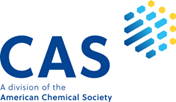Postoperative Complications in Diabetic type-2 Verses Non-Diabetic Patients Undergoing Appendectomy. A Comparative clinical Study
Pathophysiology of Diabetes Mellitus in Postoperative Recovery
DOI:
https://doi.org/10.69750/dmls.01.06.062Keywords:
appendectomy, diabetes, postoperative complications, surgical site infections, glycemic controlAbstract
Background: Diabetes Mellitus (DM) is known to double the risk of postoperative complications because of weak immunity and compromised healing.
Objectives: To analyse the rate of postoperative complications among diabetic and non-diabetic patients who have undergone appendectomy to determine whether the level of diabetes management has an impact on wound healing.
Methodology: A prospective study was done on n=300 patients who were diagnosed with acute appendicitis and were scheduled to undergo appendectomy; of which n=150 patients had diabetes type-2 and n=150 were non- diabetics. Concerning adverse outcomes, the incidence of surgical site infections (SSIs), prolonged healing of the surgical site, and the number of days spent in the hospital after the operation were identified. Diabetes mellitus was defined based on self-reported diagnosis and glycemic control was evaluated using HbA1c level with the cut-off of >7%. Chi-square and t-tests were used in the analysis of data while multivariate logistic regression was used to assess predictors of complications. p≤0.05 was considered statistically significant.
Results: Diabetic patients had a higher incidence of surgical site infections, 15.3% and 5.3%, p= 0.007 for diabetic and non-diabetic patient respectively and delayed wound healing 10.7% and 3. 3%, p = 0.015 for diabetic and non-diabetic patients respectively. Patients with HbA1c > 7% had a higher rate of SSIs of 21. 8 % and delayed healing of 15.4% compared well-controlled diabetics (p = 0.009 and p=0.02 respectively). It was more prolonged in the diabetic patients (6.1 as against 4. 3 days, p<0.001). Diabetes was found to be an independent risk factor for SSIs and slow wound healing.
Conclusion: Diabetic patients who have undergone appendectomy were more susceptible to SSIs and slow healing of the wound especially if their blood glucose levels were not well controlled. It is possible that enhanced perioperative glycemic control can decrease postoperative adverse effects.
Downloads
References
Panahi A, Bangla VG, Divino CM. Diabetes as a risk factor for perforated appendicitis: a national analysis. Am Surg. 2023;89(2):204-9. doi:10.1177/00031348221124334
Maqsood KM, Pahwani R, Avinash F, Shabbir MR, Basham MA, Khalid A, et al. Association between levels of pre-operative glycosylated hemoglobin and post-operative surgical site infections after elective surgery in a low-income country. Cureus. 2022;14(7):e27397. doi:10.7759/cureus.27397
Liu S, Shi L, Wang B, Lou J, Sun M, Yang H, et al. Preoperative hyperglycemia and risk of perioperative ischemic stroke in type 2 diabetic patients undergoing non-cardiovascular surgery: a retrospective cohort study. Front Aging Neurosci. 2022;14:990567. doi:10.3389/fnagi.2022.990567
Wu CC, Lee CH, Hsu TW, Yeh CC, Lin MC, Chang CM, et al. Is colectomy associated with the risk of type 2 diabetes in patients without colorectal cancer? A population-based cohort study. J Clin Med. 2021;10(22):5313. doi:10.3390/jcm10225313
Park BS, Cho SH, Lee SH, Son GM, Kim HS. C-reactive protein, white blood cell counts, and serum glucose as early predictors of infectious complications after laparoscopic colorectal cancer surgery. Am Surg. 2023;89(12):5821-8. doi:10.1177/00031348221135786
Tansawet A, Siribumrungwong B, Techapongsatorn S, Numthavaj P, Poprom N, McKay GJ, et al. Delayed versus primary closure for complicated appendicitis: secondary analysis of a randomized trial using counterfactual prediction modelling. Infect Control Hosp Epidemiol. 2024;45(3):322-8. doi:10.1017/ice.2023.214
Li X, Liu L, Liang XQ, Li YT, Wang DX. Preoperative carbohydrate loading with individualized supplemental insulin in diabetic patients undergoing gastrointestinal surgery: a randomized trial. Int J Surg. 2022;98:106215. doi:10.1016/j.ijsu.2021.106215
Ghazisaeedi M, Shahmoradi L, Garavand A, Maleki M, Abhari S, Ladan M, et al. Clinical decision support system for predicting postoperative CABG infection in diabetic patients. J Biomed Phys Eng. 2022;12(6):583-90. doi:10.31661/jbpe.v0i0.2011-1235
Usman A, Akbar E, Mukhtar A, Nasir I, Rehman U, Iqbal A, et al. Comparative outcomes of immediate and delayed wound closure in gangrenous appendicitis. Dev Med Life Sci. 2024;1(3):35-40. doi:10.69750/dmls.01.03.030
Gagen B, Hall C. Preventing surgical site infections in emergency general surgery: current strategies and recommendations. Curr Surg Rep. 2024;12(8):227-37. doi:10.1007/s40137-024-00405-z
Beattie J, Neufeld S, Yang D, Chukwuma C, Gul A, Desai N, et al. Utilizing large language models for enhanced clinical trial matching: automation in patient screening. Cureus. 2024;16(5):e60044. doi:10.7759/cureus.60044
Chang HH, Chang CH, Hsiao CY, Kao SY, Chen JY, Chen TH, et al. Diabetes as the most critical risk factor for adverse complications after peritoneal dialysis catheter placement. Front Med. 2021;8:719345. doi:10.3389/fmed.2021.719345
Sankhuu Y, Altaisaikhan O, Battsogt MO, Byambasukh O, Khasag A. Diabetes-related mortality in a developing country: an exploration of tertiary hospital data. J Clin Med. 2023;12(20):6687. doi:10.3390/jcm12206687
Foghsgaard S, Vedtofte L, Andersen ES, Bahne E, Andreasen C, Sørensen AL, et al. Liraglutide for prevention of glucose tolerance deterioration in women with prior GDM: a 52-week randomized trial. Diabetes Obes Metab. 2024;26(1):201-14. doi:10.1111/dom.15306
Rüggeberg A, Meybohm P, Nickel EA. Preoperative fasting and pulmonary aspiration risk: historical concepts and new perspectives. BJA Open. 2024;10:100282. doi:10.1016/j.bjao.2024.100282
Qurashi FA, Keegan AC, D’Adamo CR, Wolf JH. Post-operative day zero discharge after laparoscopic appendectomy: NSQIP database study. J Investig Surg. 2022;35(10):1767-71.
Bernard L, Chen I, Le T. Appendectomy during ovarian cancer staging increases infectious complications: NSQIP propensity-score analysis. Int J Gynecol Cancer. 2020;30(10):1542-7. doi:10.1136/ijgc-2020-001702
Shogan BD, Vogel JD, Davis BR, Keller D, Ayscue JM, Goldstein LE, et al. ASCRS clinical practice guidelines for preventing surgical site infection. Dis Colon Rectum. (Year missing; original placeholder “9900”). doi:10.1097/DCR.0000000000003450
Atef Abdelsattar Ibrahim H, Kaddah S, Elkhateeb SM, Aboalazayem A, Amin AA, Marei MM. Glucose indices as inflammatory markers in children with acute surgical abdomen: a cross-sectional study. Ann Med. 2023;55(2):2248454. doi:10.1080/07853890.2023.2248454






















